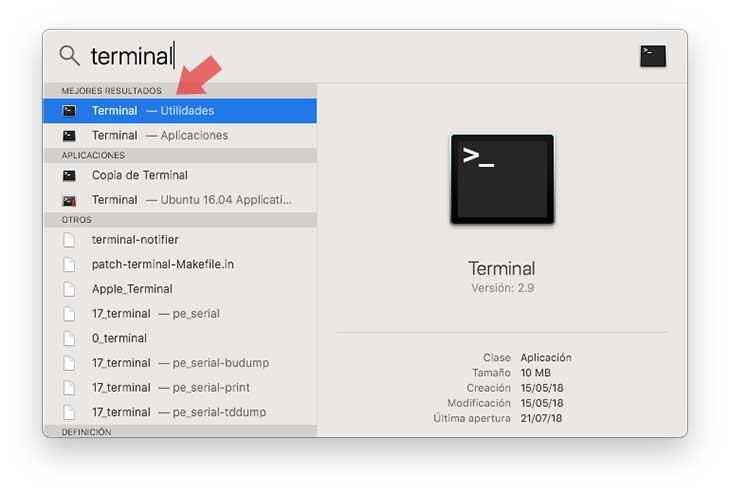

- Terminal find file mac how to#
- Terminal find file mac install#
- Terminal find file mac full#
- Terminal find file mac free#
On macOs, you can use Spotlight with keyboard shortcut ⌘ + Space and type Terminal.
Terminal find file mac how to#
How to count the number of matching rows in a big CSV fileīefore moving to the commands, open your Terminal.Searching in a CSV file for multiple keywords.Searching in a CSV file for a single keyword.If a command is located in one of the shell’s known folders, you can omit path information when entering the command name. They don't overwrite or delete your CSV files.Ī summary of the commands listed on this page: In the Terminal app on your Mac, enter the complete pathname of the tool’s executable file, followed by any needed arguments, then press Return. Note: All the commands listed bellow are just reading your files. If you do not specify a package, Composer will prompt you to search for a.
Terminal find file mac install#
I'm listed here the command I use to search in big CSV files. The install command reads the composer.json file from the current directory. The command line might seem scary but they are also very powerful. Because a CSV file is a text file and each line is a record, you can use Linux/Unix commands for manipulating texts. ' ' brad thank u for accepting my answer, but i think Ken's answer is more correct than mine. Not only will that open the containing folder, it will select the item. And each record is made of fields separated by commas (or sometimes by semicolons " " or tabular keys). The -R option to open tells it to reveal the file in the Finder.
Terminal find file mac free#
And dedicated tools target data scientists so they are expensive and complex to use.Ī free alternative is to use your terminal and manage your big CSV file using the command line.Ī CSV file is a text file, with each line being a data record. Spreadsheet tools like Excel and Google Sheet break before reaching the million of lines. In this example, we are piping the result into a grep command in order to filter the results we want.Few CSV editors can manage large CSV files.
Terminal find file mac full#
The history command displays the full history of executed commands. So, when I type ls and press Enter we see the same. Will display of all the previous commands that contain git. To see them in the terminal, you use the ls command, which is used to list files and directories. You can do this with the following command $ history | grep 'git' In some cases, you might want to display an history of commands containing your search term You enter sudo su - and press Return, and then enter the. Switch to superuser, which requires an administrative account. Press right arrow to insert the command in the current line Display search history Launch Terminal, which you’ll find in Applications > Utilities. If the first result is not the one you are looking for, continuously press ctrl+ r Execute the command

You can actually customize what folders appear in your Favorites sidebar by selecting them through Finder Preferences. for macOS Ventura Table of Contents Make Terminal windows stand out with profiles When you’re logged in to several servers, unique background colors and window titles specified in profiles help you easily spot the right Terminal window. Step 2 Click the Recents folder on the left sidebar below AirDrop and within the Favorites category. There are several ways to do this in bash from the terminal - depending on exactly what you want to find: Find files modified in the last 24 hours find / -mtime -1 -print Find files modified today (likely what you want) find / -newerct yesterday -print or, using Spotlight mdfind date:today This can also be done from the GUI with Spotlight. Quick article on how to search the OSX terminal history Interactive Search Start search Step 1 Open Finder by clicking its icon on your Dock.


 0 kommentar(er)
0 kommentar(er)
